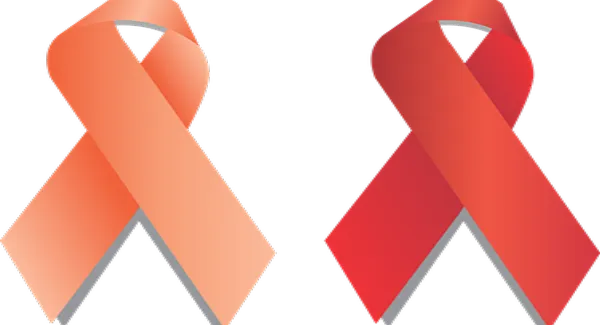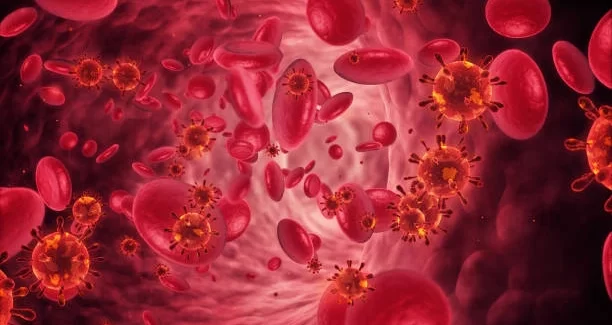Is HIV & AIDS The Same Thing? If Not What’s the Difference Between Them?

Posted Date: February 25th, 2023
Are you aware of the difference between HIV and AIDS? There are a lot of misconceptions out there about these two terms, which can lead to confusion. Many people use them interchangeably or even think they refer to the same thing – but this isn’t the case. In reality, there is a clear distinction between HIV and AIDS each having its own meaning and implications for those affected. To help clarify any potential confusion surrounding these two similar-sounding illnesses we will be taking an in-depth look into what separates HIV from AIDS so that you can better understand both conditions.
In This Article
HIV Vs AIDS:
HIV stands for Human Immunodeficiency Virus and is a virus that attacks the immune system. Over time, HIV can weaken the body’s immune system, making it more difficult to fight off infection and disease. AIDS stands for Acquired Immune Deficiency Syndrome and occurs when HIV so badly damages a person’s immune system that it can no longer fight off certain types of infections and illnesses. In other words, AIDS is the final stage of HIV infection in which a person’s immune system has become severely compromised.
What’s the basic difference between them?
The basic difference between HIV and AIDS is that HIV is a virus, while AIDS is a condition caused by the virus. People who have been infected with HIV may not show any symptoms for many years, but those same people will eventually develop AIDS if their infection isn’t managed properly. The defining factor of having an AIDS diagnosis is the presence of certain infections or illnesses that indicate a severely weakened immune system.
Furthermore, AIDS can be prevented with proper treatment and management of HIV. Early diagnosis and getting on medications such as antiretroviral therapy (ART) can help slow down or even stop the virus’s progression and prevent a person from ever developing AIDS. According to the Centers for Disease Control and Prevention (CDC), if a person with HIV is taking ART as prescribed and gets regular medical care, they can live a long, healthy life. But there’s no way to cure AIDS once it’s been diagnosed.
On the contrary, HIV or AIDS can spread through sexual contact, contact with infected needles or syringes and from mother to child. To reduce the risk of spreading HIV it’s important to get tested and practice safe sex behaviors such as using condoms or other forms of protection during sexual activity.
Is it true? HIV doesn’t progress to Stage-3?
HIV is a virus; if left untreated it can lead to a serious condition known as AIDS. However, an HIV infection does not always result in progressing to stage 3 of this illness; many people with HIV can live for years without ever developing AIDS. Technology advances such as antiretroviral therapies (ART), have significantly improved the prognosis of people with HIV and thanks to medical advances, some may never experience any symptoms or illnesses related to their infection.
The main difference between HIV and AIDS is that HIV is a virus, whereas AIDS is a condition caused by the virus. HIV is the human immunodeficiency virus that attacks and destroys a person’s immune system; when the infection progresses to stage 3, the person has AIDS. People with HIV typically experience flu-like symptoms within 2 to 4 weeks after exposure. This can include fever, exhaustion, sore throat, swollen glands and other symptoms. HIV can be diagnosed with a blood test; if someone tests positive, they might need further testing to determine the stage of their infection.
Once HIV progresses to AIDS, the individual is considered to have an advanced form of HIV infection. They may experience more severe symptoms due to the deterioration of their immune system such as severe weight loss, frequent and recurrent infections, or pneumonia. AIDS is often fatal without proper medical treatment.
People with HIV should start antiretroviral therapy (ART) immediately to reduce the chances of their condition progressing to AIDS. ART medications can suppress the virus and prevent it from causing further damage to the immune system. ART also helps to reduce the risk of HIV transmission, as it reduces the amount of virus in a person’s body.
HIV Can be transmitted from person to person?
As we said above, HIV is a virus it can be transmitted from person to person in different ways. Although HIV is not the same as AIDS it is the virus that causes AIDS. HIV is most commonly transmitted through unprotected sex, sharing needles or syringes with an infected person, receiving blood transfusions from a contaminated source and mother-to-child transmission during pregnancy and childbirth.
On the other hand, HIV can also be spread from one person to another through contact with an open wound or sore on an infected person, although this is less common. Additionally, HIV transmission can occur during oral sex if the mouth and throat of either partner come into contact with bodily fluids such as semen or vaginal secretions. It is important to note that HIV cannot be transmitted through contact with saliva, tears, sweat, or other non-bodily fluids.
As a result it is important to practice safe sex behaviors such as using condoms and refraining from sharing needles or syringes. It is also important to get tested regularly for HIV in order to detect the virus early and start treatment if necessary. While there is no cure for HIV, people living with the virus can lead long and healthy lives with proper treatment and care.
AIDS Vs. HIV: Which diagnosis is more complicated?
There is no single answer to this question, as both HIV and AIDS can be challenging diagnoses. An HIV diagnosis may lead to difficult decisions such as whether or not to start antiretroviral therapy (ART), which carries its own risks and side effects. Additionally, a person living with HIV may face significant stigma due to the virus.
On the other hand, an AIDS diagnosis is more complicated and carries more severe consequences. AIDS means that the individual’s HIV infection has progressed to a stage where their immune system is severely compromised and they are likely experiencing multiple symptoms or illnesses due to the virus. Treatment for AIDS can be complex and expensive and the prognosis for people living with AIDS is significantly poorer than those with HIV.
Overall, both diagnoses can be life-changing and require careful management. It is important to seek medical advice if you have any concerns about your risk of HIV or AIDS so that you can take the necessary steps to protect your health.
What’s the life expectancy of both?
The life expectancy of someone living with HIV or AIDS depends on many factors such as their age, overall health and the stage of their infection.
People living with HIV who receive early diagnosis and treatment can have a life expectancy similar to someone without HIV. However, those whose HIV progresses to AIDS may experience shorter lifespans due to the severity of their condition.
It is important to note that the life expectancy of someone living with HIV or AIDS can vary greatly depending on their overall health and access to medical care. Additionally, some people may have a shorter life expectancy due to co-existing conditions or complications caused by HIV or AIDS. Therefore it is important for individuals living with either diagnosis to seek regular medical care and work with their healthcare provider to develop a treatment plan that meets their unique needs.
QUES 1: What are the 4 stages of HIV infection?
ANS: The four stages of HIV infection are acute infection, clinical latency, early symptomatic disease and AIDS.
Acute Infection: This is the first stage after an individual has been infected with HIV and can last anywhere from a few days to several weeks. Symptoms may occur during this time, including fever, rash, fatigue, joint pain, night sweats and swollen lymph nodes. During this time, the virus replicates rapidly in the body and may be present in very large amounts in bodily fluids such as blood or semen.
Clinical Latency: After the acute infection phase is over, HIV enters clinical latency, also known as chronic HIV infection or asymptomatic HIV infection. During this period, there are generally no symptoms, but the virus continues to replicate at a low level while it slowly destroys the person’s immune system over time, eventually leading to AIDS if left untreated with antiretroviral therapy (ART).
Early Symptomatic Disease: Early symptomatic disease begins when an individual starts to experience some of the milder symptoms associated with HIV such as frequent fevers or sweats, swollen lymph glands that persist for more than two months, or unexpected weight loss. During this stage, individuals often have advanced stages of other infections due to their weakened immune system caused by long-term replication of the virus within their bodies which can lead them towards full-blown AIDS if left untreated.
AIDS: The final stage of HIV/AIDS occurs when an affected individual experiences severe immune system damage caused by untreated viral replication leading up to that point resulting in opportunistic infections such as tuberculosis (TB), pneumocystis pneumonia (PCP) and Kaposi’s sarcoma amongst many others which become deadly without proper diagnosis and treatment options immediately becoming available upon diagnosis of AIDS itself at that point onwards. Therefore, anyone at risk for contracting HIV/AIDS should get tested regularly so they can start antiretroviral therapy immediately upon detection.
QUES 2: When does HIV become AIDS?
ANS: AIDS stands for Acquired Immunodeficiency Syndrome and is the most severe stage of HIV infection. HIV stands for Human Immunodeficiency Virus and is a virus that damages the immune system, leading to weakened defenses against infections. HIV can become AIDS when:
-
The CD4 count (a measure of white blood cells) in your body drops below 200 cells/mm3 or lower than 14% of all lymphocytes. This drop in CD4 causes a person’s immune system to be weakened significantly, making them more vulnerable to illnesses or infections from viruses or bacteria, which other people’s bodies may otherwise fight off.
-
If you have had one of the OI (opportunistic infections – including pneumonia, tuberculosis, candidiasis) and have not been treated with antiretroviral therapy within three months after diagnosis.
It should be noted that even without treatment, some people with HIV may not develop AIDS at all, thanks to advances in medical care and improved treatments which can effectively manage symptoms and prevent progression into AIDS-defining conditions.
QUES 3: Can a person have AIDS but not HIV?
ANS: Yes, a person can have AIDS without having HIV. This is because AIDS is an advanced stage of HIV infection and you cannot have one without the other. However, there are some rare cases in which people can contract what is called “elite controllers,” meaning that they can fight off the virus more successfully than most people and either become clinically healthy or remain symptom-free despite having HIV in their bloodstream. Elite controllers are very rare cases – less than one percent of all HIV-positive individuals are elite controllers – but it does mean that a few people may have AIDS without actually being infected with HIV.
QUES 4: Can you get HIV from kissing?
ANS: Absolutely not. Although HIV is a virus that can be spread through bodily fluids like semen, blood, breast milk and vaginal fluid—it cannot be transmitted through saliva. In fact, the risk of HIV transmission from kissing alone is virtually zero. Saliva actually contains proteins and other enzymes that help break down the virus before it has time to enter into the body.
Furthermore, research has been conducted to support this claim that there is no risk in kissing someone with HIV—the most significant study was conducted in 2004 which found no evidence of transmission when people with HIV kissed their partners without either partner bleeding or using lubricant containing oil-based spermicides or having any open lesions in their mouths. The same conclusion applied regardless of whether or not one partner had an undetectable viral load at the time they were kissing.
Although you cannot get HIV from kissing someone who has it, it’s still important to take precautions if engaging in sexual activities involving direct contact with bodily fluids such as semen or vaginal fluid—use a condom every single time!
The Last Word:
Though it’s often used interchangeably, HIV and AIDS are actually two separate diagnoses. HIV is a virus that attacks the body’s immune system. AIDS is a syndrome caused by the weakening immune system due to HIV infection. It can take years for AIDS to develop in someone living with HIV and though there is no cure for either disease, treatments are available that allow people to live long, healthy lives. We hope this article has helped to clarify the difference between HIV and AIDS so that you can better understand both conditions. Having accurate knowledge about any health concern is essential for making informed decisions.








